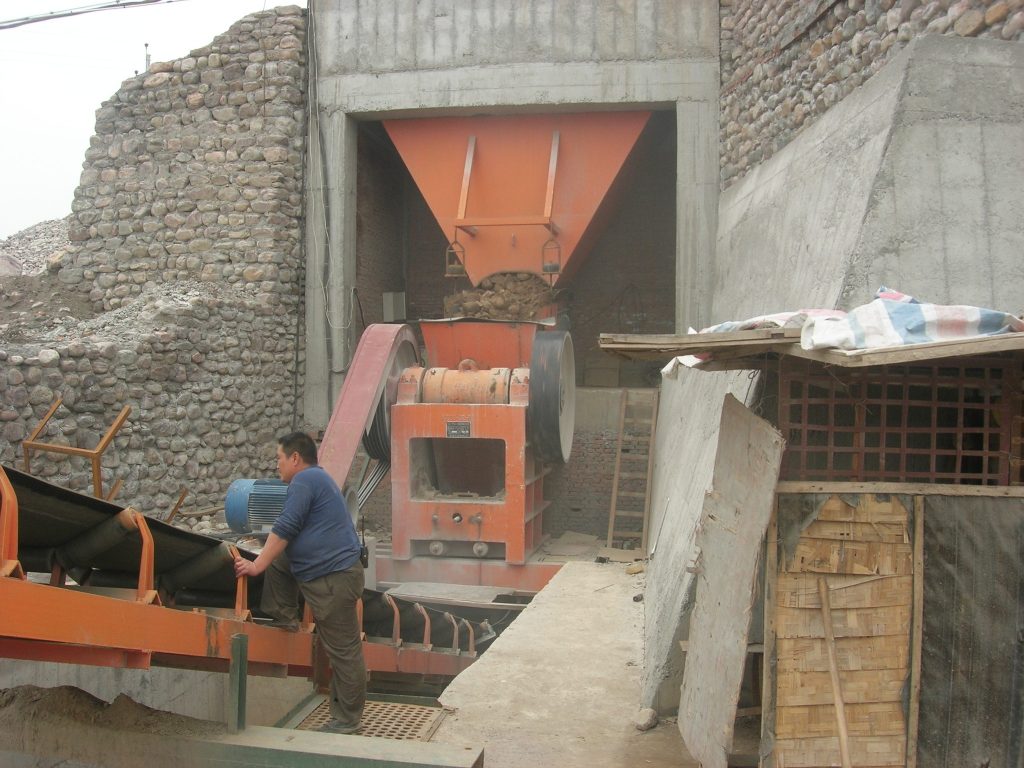Iron Sand Processing Crushing Plant: Key Steps, Equipment, and Benefits
Iron sand, a naturally occurring mineral resource rich in iron oxides, is widely used in construction, steel production, and industrial manufacturing. To unlock its full potential, specialized processing plants—specifically iron sand crushing plants—play a pivotal role. This article explores the fundamentals of iron sand processing, the machinery involved, and why these facilities are essential for modern industries.
What is an Iron Sand Processing Crushing Plant?
An iron sand processing crushing plant is a facility designed to extract, crush, screen, and refine iron-rich sand into usable materials. These plants employ advanced machinery to transform raw iron sand into high-quality aggregates or concentrated iron ore for steelmaking and other applications. The process ensures efficient resource utilization while minimizing waste.

Key Steps in Iron Sand Processing
- Excavation and Transportation
Raw iron sand is mined from coastal or riverbed deposits and transported to the crushing plant via trucks or conveyors. - Primary Crushing
Jaw crushers or gyratory crushers break down large chunks of iron sand into smaller, manageable pieces (50–150 mm). - Secondary Crushing and Screening
Cone crushers or impact crushers further reduce particle size. Vibrating screens separate finer particles for refining. - Magnetic Separation
Magnetic separators isolate iron-rich particles from non-metallic impurities like silica. - Grinding and Washing
Ball mills or rod mills pulverize the material into fine powder. Water jets remove residual contaminants. - Drying and Stockpiling
Rotary dryers eliminate moisture, and the final product is stored for distribution.
Essential Equipment in Iron Sand Crushing Plants
- Jaw Crushers: For coarse crushing of raw iron sand.
- Magnetic Separators: Critical for extracting pure iron content.
- Vibrating Screens: Ensure uniform particle sizing.
- Cone Crushers: Achieve precise secondary crushing.
- Ball Mills: Grind processed sand into fine powder.
- Dust Control Systems: Minimize environmental impact.
Benefits of Modern Iron Sand Processing Plants
- High Efficiency
Automated workflows reduce processing time and labor costs. - Resource Optimization
Advanced separation techniques recover up to 95% of usable iron content. - Eco-Friendly Operations
Closed-loop water systems and dust suppression technologies minimize environmental harm. - Scalability
Modular designs allow plants to adapt to varying production demands. - Cost-Effectiveness
Reduced waste and energy consumption lower operational expenses.
Applications of Processed Iron Sand
- Steel Production: A primary raw material for pig iron and steel alloys.
- Construction: Used in concrete, asphalt, and heavy-duty foundations.
- Manufacturing: Key component in abrasives, coatings, and industrial machinery.
- Land Reclamation: Stabilizes soil in coastal engineering projects.
Sustainable Practices in Iron Sand Processing
Leading crushing plants now prioritize sustainability:
- Recycling water used in washing stages.
- Utilizing renewable energy sources like solar power.
- Restoring mined sites to prevent ecological disruption.
Choosing the Right Crushing Plant
When selecting an iron sand processing plant, consider:
- Capacity: Match throughput to your mining output.
- Automation Level: Opt for IoT-enabled systems for real-time monitoring.
- Compliance: Ensure adherence to local environmental regulations.
Conclusion
Iron sand processing crushing plants are indispensable for transforming raw mineral deposits into valuable industrial materials. By integrating cutting-edge technology and sustainable practices, these facilities maximize productivity while reducing environmental footprints. Whether for steel manufacturing or infrastructure projects, investing in a well-designed crushing plant ensures long-term profitability and resource efficiency.
- > Impact Crusher: An Efficient Solution for Coal Crushing Applications
- > Comprehensive Guide to Installation and Commissioning of Mobile Crushing Stations
- > Mobile Impact Crusher for Construction Waste Recycling: An Efficient Solution
- > Applications of Mobile Dolomite Cone Crusher in Malaysia: A Comprehensive Overview
- > PY Series High-Efficiency Spring Cone Crusher: Enhancing Crushing Efficiency and Durability
- > Crawler Mobile Crushers in Open-Pit Mining: Efficiency and Flexibility
- > Key Process Points for Crushing Volcanic Rock in Indonesia with Jaw Crushers
- > Innovative Ball Mill Design for Fine Powder Glass Crushing
Hot Product


Online




Message
